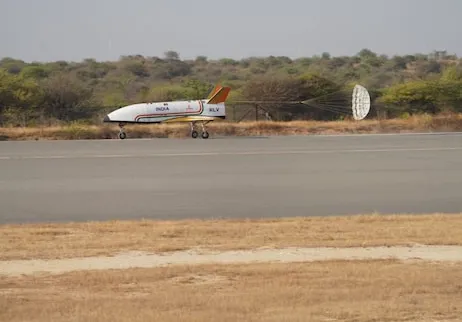‘India nailed it’: ISRO on successful autonomous landing test of reusable launchers
The Indian Space Research Organization (ISRO) on Sunday successfully completed the Reusable Launch Vehicle Autonomous Landing Mission (RLV LEX).
The test was conducted at the Aeronautical Test Range (ATR) in Chitradurga, Karnataka, the national space agency said. ISRO carried out the experiment in collaboration with the Air Force and the Defense Space Research Organization.
ISRO took to Twitter to announce the successful completion of the landing mission and said “India achieved it!”
“India achieved it! ISRO, joined by @DRDO_India @IAF_MCC, successfully conducted the Reusable Launch Vehicle Autonomous Landing Mission (RLV LEX) at Aeronautical Test Range (ATR), Chitradurga, Karnataka early on 02 April 2023,” the tweet read.
India 🇮🇳 achieved it!ISRO, joined by @DRDO_India @IAF_MCC, successfully conducted the Reusable Launch Vehicle Autonomous Landing Mission (RLV LEX)
at the Aeronautical Test Range (ATR), Chitradurga, Karnataka in the early hours on April 2, 2023.
— ISRO (@isro) April 2, 2023
ISRO successfully completed the Reusable Launch Vehicle Autonomous Landing Mission (RLV LEX). The test was conducted at the Aeronautical Test Range (ATR), Chitradurga, Karnataka, in the early morning of 2 April 2023.
According to an ISRO press release, the RLV took off at 7:10 AM on an Indian Air Force Chinook helicopter as a “lower load” and flew to an altitude of 4.5 kilometers (above MSL).
“When the predetermined pillbox parameters were reached, based on a command from the RLV’s mission control computer, the RLV was released mid-air, 4.6 km down,” the press release said.
“The release conditions included 10 parameters covering position, velocity, altitude and body velocities etc. The release of the RLV was autonomous. The RLV then performed approach and landing maneuvers using the Integrated Navigation, Guidance and Control System and performed an autonomous landing on the ATR runway at 7:40 AM IST. It enabled ISRO to successfully land the space vehicle,” it added.
“Top technologies”
The autonomous landing was carried out exactly under the landing conditions of the Space Re-entry vehicle – fast, unmanned, precise landing from the same re-entry path – as if the vehicle was arriving from space, ISRO said.
“Landing parameters such as ground relative velocity, landing gear sinking rate and exact body velocities that a re-orbiting spacecraft can experience on its re-entry path were achieved,” ISRO said.
The space agency said RLV LEX required a number of “cutting-edge technologies” including precision navigation hardware and software, pseudolith system, ‘Ka-band’ radar altimeter, ‘NavIC’ receiver, indigenous landing gear, Aerofoil honeycomb. fins and brake parachute system.
First in the world
ISRO said that for the first time in the world, a winged body has been carried to an altitude of 4.5 km by a helicopter and released to perform an autonomous landing on the runway.
According to ISRO, the RLV is essentially a “spacecraft with a low lift/drag ratio that requires approach at high glide angles, which necessitated landing at high speeds of 350 km/h”.
Several indigenous systems were used in the landing experiment, ISRO said it was developing indigenous navigation systems based on pseudolith systems, instrumentation and sensor systems etc.
“A Digital Elevation Model (DEM) of the landing site using the Ka-band radar altimeter provided accurate altitude information. Extensive wind tunnel tests and CFD simulations enabled aerodynamic characterization of the RLV prior to flight. Adaptation of modern technologies developed for RLV LEX will make ISRO’s other operational launch vehicles more cost-effective,” ISRO said .
Read all the Latest Tech News here.




